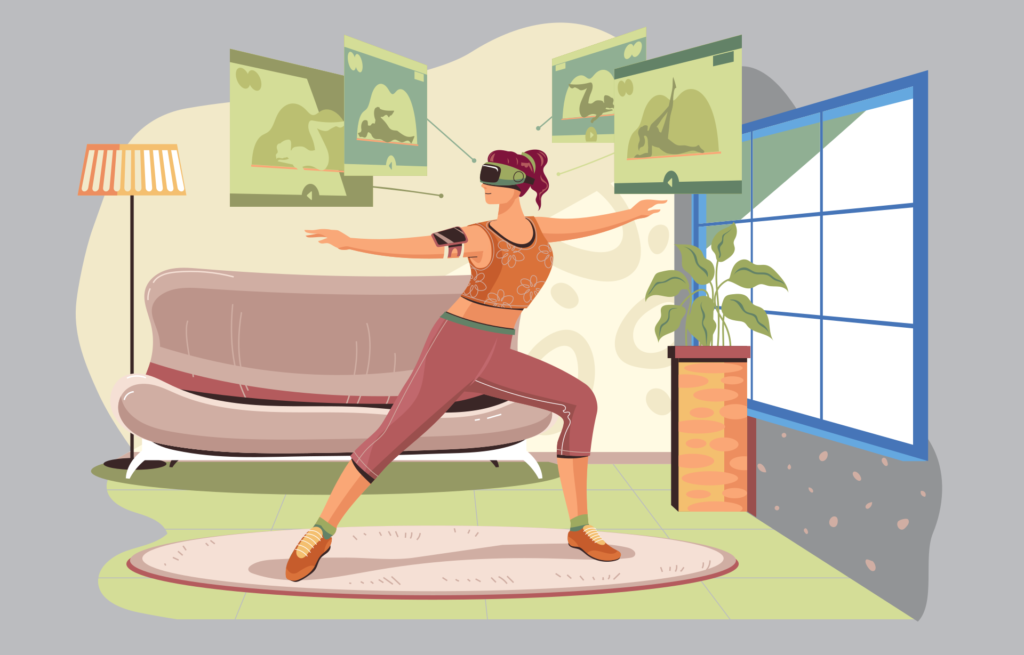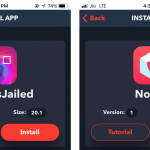Advertising in VR Apps: A Menace or a Golden Opportunity?
To paraphrase Benjamin Franklin, we can be sure of nothing in this world but death and taxes. Given how the information age is shaping up, we should include advertisements in this list.
Ads are inescapable – we are bombarded with them on websites, videos, even on city streets. For years, people have escaped to virtual reality for some respite, seeing it as one of the last bastions without annoying banners. Well, no more Advertisements are coming to VR apps.
Before you groan and toss your VR headset in the bin, consider that these ads might not look the way you expect them to, and it’s not exactly like VR apps have been free from monetization in the past. In this article, we want to examine the implications of these changes, and the unique opportunity available to those who release a monetized app, especially within emerging sectors like virtual training solutions.
The state of VR in 2021
What is it about VR that has attracted the focused gaze of advertisers? Well, first of all, the technology is quite popular. The overall market cap is estimated to be over $20 billion, and an estimated 16 million active headsets – about the population of Switzerland and Denmark combined.
Adding to this, VR headsets have become quite affordable. The first mainstream VR headset (Oculus Rift) cost $599, but the newest and more advanced Oculus Quest 2 costs half as much – $299. We see the same trend across other manufacturers. For reference, next-gen game consoles like the PS5 and Xbox Series X cost $499. If you want to know more about the amazing headsets currently available, be sure to check out our analysis of the best VR headset of 2021.
Another factor that makes VR fertile ground for monetization is its broad appeal: it is no longer a niche technology for gaming and entertainment. Modern VR apps are often targeted for general use functionality (e.g. virtual tours and conferences) or even specialty use by enterprises (professional apps for internal company use). In fact, an estimated 23 million jobs should be using the technology in the next 10 years.
Thus, this is a valuable market for both businesses and consumers.
Why monetization is important for VR apps
No matter how much we might wish the opposite were true, buying a VR headset does not instantly give you access to all VR apps on the platform. To be worthwhile to produce, VR apps still have to generate profit or value, and the first target is covering development costs.
While the very simplest of apps generally cost about $40K-$60K to develop, VR apps are on a whole other level. Due to the technical complexity involved and the amazing 3D content normally featured in this software, costs usually go for upwards of $100K.
App development is no joke or charity, so it would be unfair to expect a popular app to survive without financial support. As much as we might whine about ads and monetization, we wouldn’t have the amazing selection of VR apps available today without them. Beyond covering costs, monetized software also provides the opportunity for studios to reward developers with bonuses for motivation and fill their coffers for new and ambitious projects.

How VR apps are monetized
Developers and publishers can make money off VR apps through a variety of means and mechanics: some subtle, others not so much.
1. Initial purchase
This is the most common and transparent business model. The user makes a single payment and gets access to the app functionality for an unlimited amount of time. At the same time, this approach is a bit risky for developers, as their compensation is tied directly to total sales.
2. Subscription
The subscription payment model has become quite popular over the last decade, serving as a middle ground between full-purchase and free apps. Typically, users pay a small amount each month (which would be higher in a single-purchase model), letting them stop payment at any time. On the other hand, if the users stick around for many months and years, publishers can get a huge return on investment.
3. Ads
Ads in VR are unlikely to be presented in the form of banners and pop-ups. Instead, we can see targeted text and images being interwoven into the game world in a way that hopefully feels organic and not too jarring.
4. Branded apps
Some apps exist not to generate profit, but rather to have users engage with their brand and products in a fun and innocuous way. In the long term, this should stimulate sales and business growth. Sometimes, branded content is just added to third-party games in the form of product placement, subtle advertising, etc.
5. Premium content
In-app purchases, add-ons, paid items – you get the idea. Premium content can be a great additional (for some apps, primary) source of revenue, and we see it used in both paid and free apps. Still, some users are hostile towards additional paywalls in apps they already purchased, so we see such content more in free apps (via the so-called “freemium” business model).
6. Data sales
That’s right, user data in VR is valuable. By now, everyone knows that services like Facebook and Google share their data, so why would other platforms be any different? Just imagine how much information about user behavior and preferences can be collected just by recording what users look at and interact with in a virtual environment.
To illustrate, a company that is planning to roll out a new product but has not settled on a design might include ne
Can you turn a profit with a monetized VR app?
As we have mentioned, app development is very costly, and the same goes for supporting the software and delivering regular updates and features. To be profitable, not only does your app have to be well-made and popular, but you should also choose a smart monetization strategy. Thankfully, there are plenty of opportunities available, and the recent addition of ads sweetens the pot even further. There has never been a better time to make a money-making VR app.
If you go this route and choose to create an app for VR, you can get a big boost by enlisting the backing and services of a VR app development company. Unless you have specialists at your company with experience in VR design, it can take a lot of time for the project to take off without external assistance. A good partner should have years of experience in this field, and manage to build and package all the features you need rapidly.
















